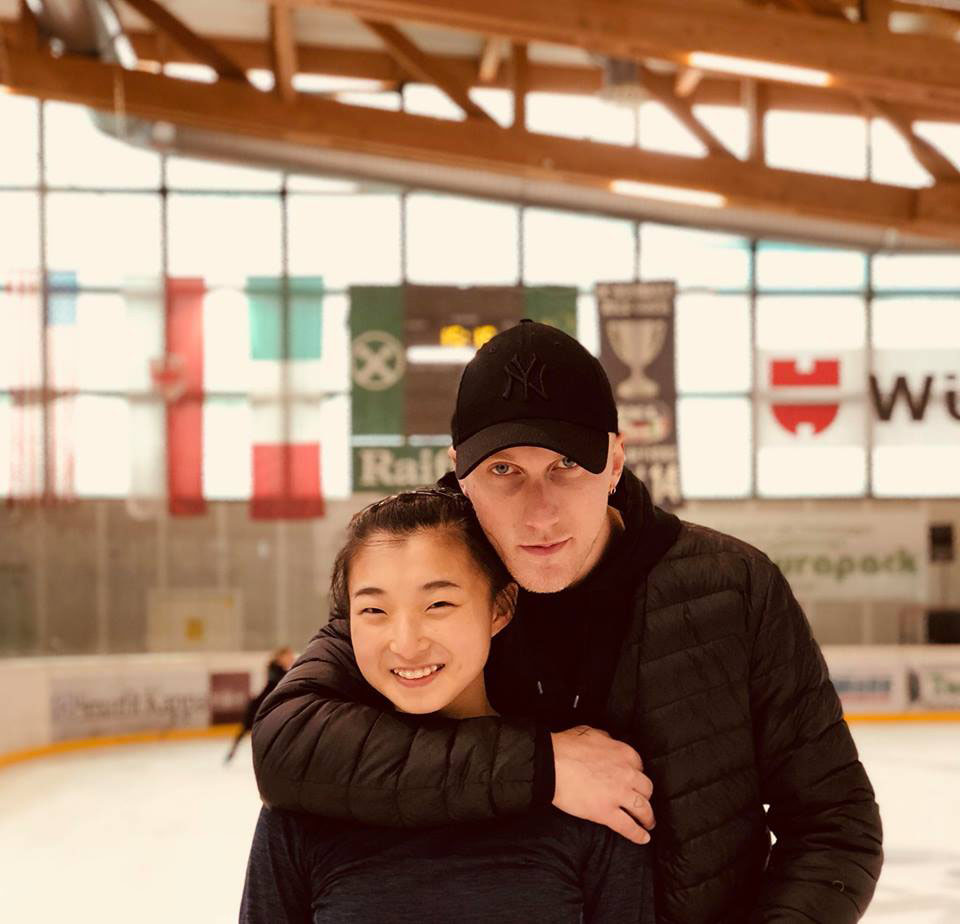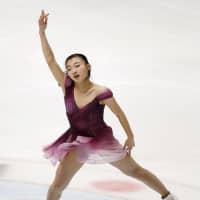Kaori Sakamoto was impressive in victory at the Japan nationals on Sunday, rising to the occasion on the biggest domestic stage of the year.
That the 18-year-old dethroned four-time defending champion Satoko Miyahara and beat Grand Prix Final winner Rika Kihira may have surprised some, but Ice Time was not one of them.
Sakamoto has been surging for more than one year now. Her triumph at the Four Continents last January, along with her sixth-place finish at the Pyeongchang Olympics, plus a strong GP campaign (with two podium finishes) this fall showed a consistent trend upward.
It culminated for the Kobe native on Sunday night when, in the shadow of her hometown, she fused all of her considerable talents to score a personal best of 152.36 in the free skate and become the national champion.
The reality is that Sakamoto is no stranger to success. She was Japan's novice champion in 2012, and the Japan junior champion in 2016, beating then world junior queen Marin Honda for the title in Sapporo. That win came two months after she had beaten Honda at the Yokohama Junior Grand Prix.
Sakamoto went on to take the bronze medal at both the JGP Final and world juniors that same season. Then she began her charge in the senior ranks with a second-place showing at Skate America last season.
Even though she was winning, Sakamoto was overshadowed by the glamour associated with Honda and the potential of Kihira. Meanwhile, a champion was growing into a force.
One fact that has disturbed Ice Time for a while now are the so-called experts, both foreign and domestic, who regard Sakamoto as "just a jumper."
As recently as this GP season, analysts like Tara Lipinski and Johnny Weir have knocked Sakamoto's artistry, using terms like "messy" to refer to Kaori's arm movements and upper body while competing.
Over the years Ice Time has noted how people who don't live here claim to know Japanese skating, but in reality don't. They watch the competitions on TV, but actually know little about the backgrounds or makeup of the Japanese skaters.
This is how false narratives — like a skater being tabbed as "just a jumper" — begin and get promulgated.
Those of us who have followed Sakamoto closely for years know that she has a superb combination of athleticism, artistic ability, guts and a winning personality.
"Kao-chan" has been admired by her fellow Japanese skaters for a long time. They respect not only her skill, but her fortitude. I have often thought that if Sakamoto had lived in ancient times, she would have been a warrior.
I spoke with Benoit Richaud, who choreographed Sakamoto's lovely free skate to "The Piano" this season, via telephone this week and he seconded my feelings about his prized pupil.
Richaud was first approached by Kaori's coaches (Sonoko Nakano and Mitsuko Graham) at the 2016 world juniors in Taipei about working with the young skater.
"The people who say she is just a jumper, I'm thinking, 'Do you really watch Kaori Sakamoto?' Benoit stated. "You cannot say she is only a jumper. I think you can say she is one of the skaters who has her own personality. It means that she looks like no one else, and this is something really unique."
Benoit, a former junior ice dancer for France, remembered back to his first interaction with Sakamoto.
"When I first started working with Kaori, nobody really talked about her," Richaud recalled. "When I did my first practice with her (in 2016), I remember saying to a friend, this girl may be a champion."
The 30-year-old Richaud, who hails from Avignon, says he was moved by Sakamoto's personality and potential.
"I thought she was really far from her limit then," Richaud recalled. "I thought she could jump higher and do harder jumps than she was doing. If you compare the past two years, I think she is the only one who has developed that fast.
"From the first time I worked with her, I felt there was something really special," Richaud added. "She is a hard worker. There is the hard worker, and the person that loves hard work. That is Kaori."
Richaud, who arranged Sakamoto's fantastic "Amelie" free skate last season, came to Japan the week before the nationals to help her polish this season's free skate and detailed just how much she wanted to be the champion.
"When I was in Kobe we were working almost 10 hours a day on the ice," Richaud noted. "I asked her, 'Are you sure you are fine?' She really wanted it. She said she was and we worked on every small detail. We did some small changing of the program and it was just one week before and I said, 'Oh, my God.' "
Richaud saluted Sakamoto's ability to withstand the pressure to prevail at the nationals.
"Come on, skating last from the last group at nationals, when everybody expects you to skate good (is tough)," Richaud said. "Her will was really strong."
Hosoda shines on big stage
One of the revelations of the nationals was the performance of Ayaka Hosoda, the 23-year-old Kansai University student, who landed three triple axels between her short program and free skate and came in eighth.
Hosoda, who didn't even qualify for the nationals last season, has been around for a while, but her mastery of the triple axel is what has vaulted her into the spotlight.
She detailed how she learned the jump by practicing daily with Kihira. Both are coached by Mie Hamada and Yamato Tamura.
Hosoda received a standing ovation from the audience on Sunday and seemed as surprised as everyone else about her success with the difficult jump.
"I kept skating for this, landing the triple axel at nationals," Hosoda stated. "I'll talk to my coach about my future. I am super surprised at my triple axel. I can mark a full score."
Hosoda, who is from the Osaka suburb of Suita, said practice was not a chore for her.
"Training was not hard for me because I love skating, my coach and my teammates," Hosoda commented. "Because of this I could keep skating.
"I would like to thank my fans for waiting for a long time. I could land the triple axel with your support."
Mishin gives view on Japan
Legendary coach Alexei Mishin, who led Alexei Urmanov, Alexei Yagudin and Evgeni Plushenko to the Olympic gold medal, had some interesting takes on Japanese skating in a recent interview.
“In Vancouver among top six skaters there were as many Japanese women as there were Russians, three,” Mishin told writer Elena Danilevich of the aif.ru website earlier this month in a translation posted on fs-gossips.com. “Experts say that behind the success of the Japanese athletes there is our school, they just took all the best of Russian women’s skating. So, we ourselves armed our rivals?”
The 77-year-old mentor then tried to put the issue into perspective.
"We should look at the question more broadly. For a long time, Soviet figure skating dominated in the world," Mishin stated. "Athletes from many countries borrowed everything that was created by our system of physical education. Some of my books, for example, have been translated into Italian, German, English.
"So, the Japanese, like others, actively used our work," Mishin continued. "However, it did not happen without American choreographers and Canadian artists, whom Japanese figure skaters invite to work with them. The combination of Russian technique and American choreographers gave the high results that we see now."
Mishin then gave his evaluation of Kihira, not long after the 16-year-old had won the GP Final.
"As for Kihira, she is a very talented girl," Mishin remarked. "There are no special secrets in her techniques, but she jumps perfectly, rotates fast in the air. We can only congratulate her with a new world record."





